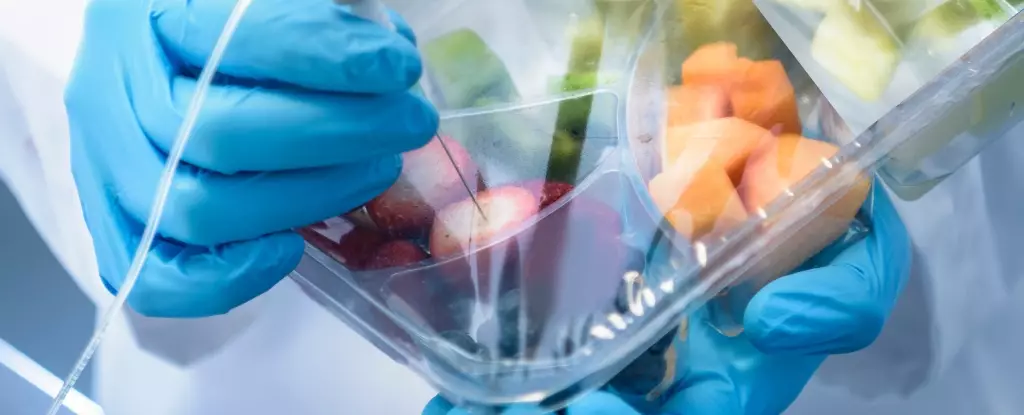Recent investigations have unveiled a startling reality about food packaging and preparation: over 3,600 chemicals have been identified within the human body, as indicated by a comprehensive study released on Tuesday. The implications of these findings are profound, particularly because around 100 of these chemicals pose a significant risk to human health. Birgit Geueke, the lead author of the study and representative from the Food Packaging Forum Foundation, emphasizes the necessity of heightened awareness regarding the potential hazards linked to substances found in food packaging. The findings highlight a critical need for further research into the migration of these chemicals from packaging into food, showcasing the often-overlooked connection between what we consume and our health.
The research identifies food contact chemicals (FCCs) as those that can infiltrate our food from various forms of packaging, including plastic, paper, glass, and metal. Beyond packaging, these chemicals can also originate from processing equipment and kitchen utensils. Surprisingly, the researchers cataloged approximately 14,000 known FCCs, but they expected only a fraction to be found in human biomonitoring databases. When the results revealed a staggering 3,601 chemicals, comprising about a quarter of all known FCCs, it became clear that the problem is far more extensive than researchers had anticipated.
Geueke’s caution reminds us that while it is unknown exactly how these chemicals make their way into our bodies, alternative exposure sources may exist beyond food. This complexity underscores the need for a comprehensive understanding of chemical exposure in our daily lives—not merely from food but as part of a broader environmental challenge.
Among those identified, several chemicals carry grave implications for health, categorized as substances of “high concern.” Per- and polyfluoroalkyl substances (PFAS), often termed “forever chemicals” due to their persistent nature, have raised alarms in the medical community for their association with a range of health issues, including hormonal disruptions and infertility. Bisphenol A (BPA), another notorious chemical used in plastic production, has already been banned from baby bottles in numerous countries owing to its hormone-disrupting properties.
Despite the increased vigilance surrounding these chemicals, a worrying gap exists in our knowledge about others, particularly oligomers produced in the plastic manufacturing process. Geueke starkly points out the almost complete lack of research into the health effects of these oligomers, highlighting an urgent need for scientific inquiry into less familiar but potentially harmful substances.
An essential concept in toxicology is that not only does the dose matter, but the interaction between different chemicals also poses significant risks. Geueke reveals that some samples contained as many as 30 different PFAS, raising concerns about synergistic effects that could amplify health risks. Given the multifaceted nature of chemical exposure, it is vital for individuals to consider practical steps to minimize contact with these substances, such as reducing the duration that food is in contact with its packaging or avoiding reheating meals in their containers.
Experts in the field, like Duane Mellor from Aston University, reinforce the necessity for a balanced approach. While the implications of the study warrant serious consideration, he suggests that rather than succumbing to fear, individuals should advocate for improved data concerning chemical exposure and prioritize minimizing unnecessary risks associated with food packaging.
The awareness generated by studies like Geueke’s has sparked regulatory action, particularly within the European Union, which is nearing the completion of bans on PFAS in food packaging. In addition, the EU has tabled similar regulations against BPA, targeting the end of the current year for implementation. These movements signal a growing recognition of the urgency to address food safety and public health in regard to chemical exposure.
The discoveries regarding the vast array of chemicals present in human bodies due to food packaging are both enlightening and alarming. The research calls for a collective effort to enhance understanding and mitigate risks associated with these chemicals. It is imperative that further investigations are conducted to unveil the full extent of their impact on human health and that consumers, policymakers, and scientists unite in pushing for stringent regulations and safer food practices.

